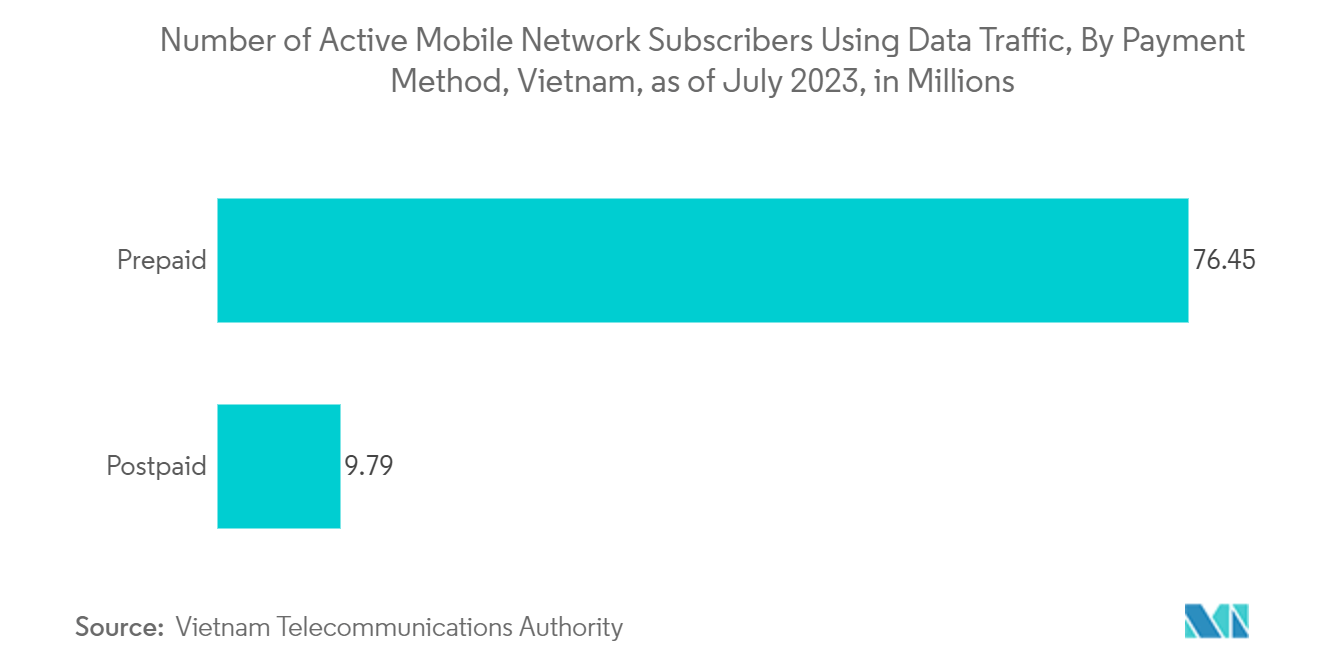Market Trends of Vietnam Telecom Towers Industry
MNO Captive Sites Augment the Market's Growth
- The growth of the Vietnam telecom towers market is significantly influenced by the expansion of Mobile Network Operators (MNOs) through captive sites. Captive sites, which are tower sites owned and operated by MNOs themselves, are becoming increasingly prevalent as operators seek to enhance network coverage, especially in rural and underserved regions.
- The rapid increase in mobile data consumption, driven by the widespread adoption of smartphones and the ongoing rollout of 4G and upcoming 5G networks, is compelling MNOs to build and expand their own infrastructure rather than relying solely on third-party tower companies.
- In May 2024, ST Telemedia Global Data Centres (STT GDC), a growing data center provider, introduced a joint venture partnership with VNG Corporation, a key technology company in Vietnam, for the development, construction, and operation of data center projects in Ho Chi Minh City, Vietnam.
- This trend is further supported by Vietnam's government policies that encourage the development of digital infrastructure to support economic growth and digital transformation. The competitive landscape among MNOs is pushing them to secure strategic locations and improve service quality through dedicated infrastructure, which is leading to a rise in the number of captive sites.
- As a result, while the presence of independent tower companies remains strong, the market is witnessing a shift toward a more mixed ownership model, where MNOs are increasingly taking control of their infrastructure to maintain competitive advantages. Overall, the proliferation of captive sites by MNOs is a critical factor propelling the expansion and evolution of Vietnam's telecom infrastructure landscape.

Renewable Fuel Type Spur the Market's Growth
- The growth of the Vietnam telecom towers market is increasingly driven by the adoption of renewable fuel types, which align with the country's broader sustainability goals and the telecom industry's need to reduce operational costs.
- As Vietnam continues to expand its telecom infrastructure to support rising data demand and digitalization, the shift toward renewable energy sources, such as solar and wind power, is becoming essential. This transition is motivated by the high cost and environmental impact of traditional diesel generators, which have historically powered remote telecom sites.
- The Vietnamese government's supportive policies and incentives for green energy investments encourage telecom operators to integrate renewable fuels into their tower operations. This shift not only enhances the sustainability of telecom networks but also positions Vietnam as a key provider in green technology adoption within the region, further spurring the growth of its telecom towers market.
- For instance, in July 2024, through Decree 80/2024/ND-CP, the Vietnamese government rolled out Direct Power Purchase Agreements (DPPA). This initiative highlights Vietnam's commitment to decarbonizing its economy, with an ambitious goal of reaching net-zero emissions by 2050. The DPPA facilitates the direct sale of rooftop solar energy and other renewable sources, leveraging both private transmission lines and the national grid. Beyond meeting the rising demand for clean energy, this move is set to boost investments in renewable resources.


